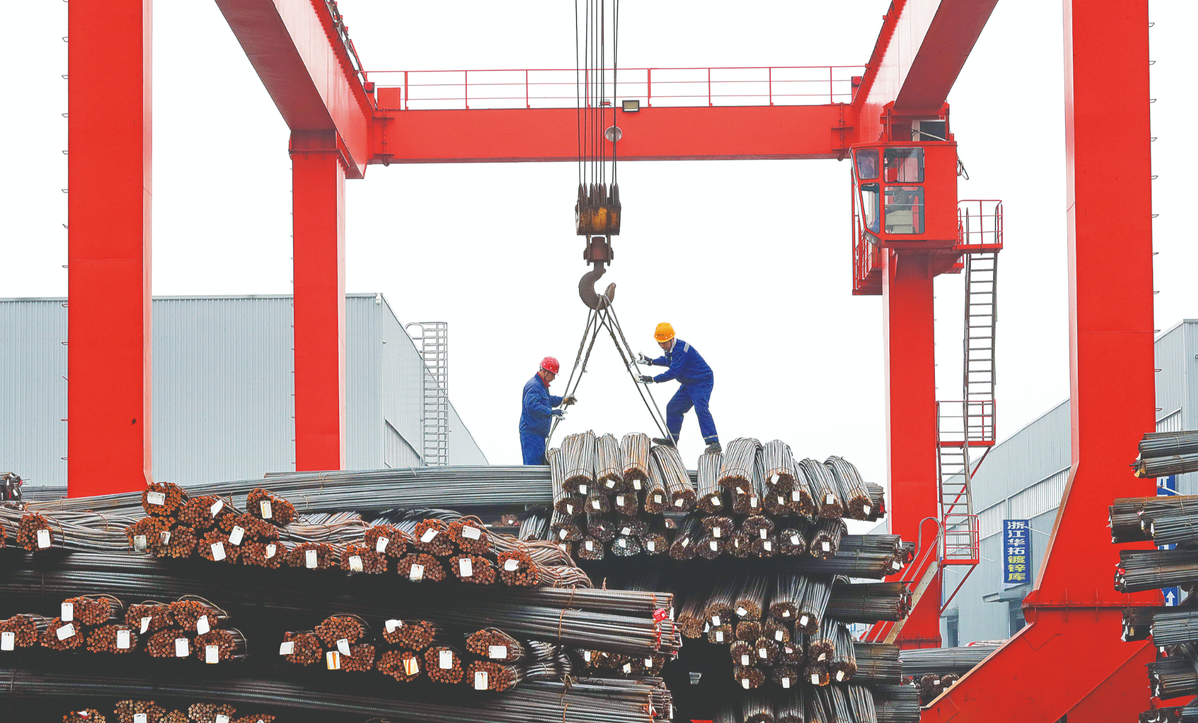
Workers load steel products at a logistics park in Huzhou, Zhejiang province. [Photo:China Daily]
China's steel industry is expected to run smoothly for the rest of the year with demand growth outpacing production growth, and steel demand to further increase thanks to policy support, according to authorities.
The steel industry remained stable in China with consistent supply and steady prices during the first quarter of this year, despite the complicated conditions. The steel industry is expected to achieve better performance as the overall Chinese economy expands and policy measures ensuring stable growth take better effect, said Qu Xiuli, deputy chairwoman of the China Iron and Steel Association.
According to Qu, domestic steel enterprises have adjusted their variety structure following changes in market demand and achieved stable supply prices during the first few months of this year.
The industry has also achieved a balance between supply and demand during the first three months, and the profitability of steel enterprises has improved and shown month-on-month growth. The industry will continue promoting steady and sustainable development of industrial chains in the days to come, she said.
The country's steel production has been running low this year. China has produced 243 million tons of steel during the first three months, down 10.5 percent year-on-year, the association said.
According to Shi Hongwei, deputy secretary-general of the association, the pent-up demand seen during the early days will not disappear and the total demand will gradually improve.
The association expects steel consumption during the latter half of the year will not be lower than the second half of 2021 and the total steel consumption this year will be about the same as the previous year.
Li Xinchuang, chief engineer of the Beijing-based China Metallurgical Industry Planning and Research Institute, expects that consumption-driven new steel infrastructure construction this year will be around 10 million tons, which will be playing a significant role in the steady steel demand.
The volatile international commodity market has imposed negative impacts on the steel industry this year. While China's iron ore price index by the end of March reached $158.39 per ton, up 33.2 percent compared with the beginning of this year, the price of imported iron ore continues to fall.
Lu Zhaoming, deputy secretary-general of the association, said the government has attached great significance to ensuring the country's steel industry resources with several policies, including the cornerstone plan, which emphasizes the acceleration of domestic iron ore development.
As China relies heavily on imported iron ore, it is necessary to implement the cornerstone plan, which is expected to resolve the shortage issues in steelmaking ingredients by raising its equity output of iron ore in overseas mines to 220 million tons by 2025 and increasing domestic raw material supplies.
China plans to raise the share of overseas iron ore production from 120 million tons in 2020 to 220 million tons by 2025, while it also aims to boost domestic output by 100 million tons to 370 million tons and steel scrap consumption by 70 million tons to 300 million tons.
An analyst stated that domestic enterprises have also been upgrading their product portfolios to better meet high-end demand with continuous efforts on low-carbon development to achieve a significant reduction in energy consumption and carbon footprint.
Wang Guoqing, director of the Beijing Lange Steel Information Research Center, said the effective implementation of domestic iron ore development plans will help boost domestic mine output while further improving the country's iron ore self-sufficiency rate.
The China Iron and Steel Association's cornerstone plan will also further ensure domestic energy security.
Figures from the Beijing Lange Steel Information Research Center reveal that domestic investment in iron ore development has increased significantly since 2021. The country saw its investment in iron ore rise 26.9 percent year-on-year in 2021.


